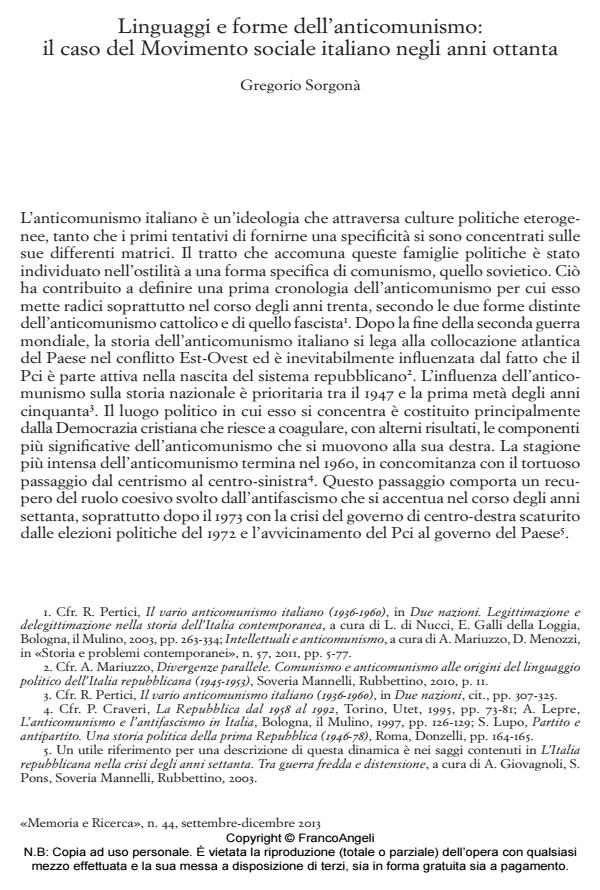Languages and types of anti-communism: the case of Movimento sociale italiano in the 1980s
Journal title MEMORIA E RICERCA
Author/s Gregorio Sorgonà
Publishing Year 2013 Issue 2013/44
Language Italian Pages 18 P. 161-178 File size 482 KB
DOI 10.3280/MER2013-044010
DOI is like a bar code for intellectual property: to have more infomation
click here
Below, you can see the article first page
If you want to buy this article in PDF format, you can do it, following the instructions to buy download credits

FrancoAngeli is member of Publishers International Linking Association, Inc (PILA), a not-for-profit association which run the CrossRef service enabling links to and from online scholarly content.
The paper provides an insight into the history of Italian anticommunism by focusing on the case study of 1980s Msi-Dn (Movimento sociale italiano-Destra nazionale). The chronological framework matches with a decade of deep transformation of the communist movement, which will have its peak with the collapse of the Ussr. The development of Msi is undoubtedly affected by the transformation of its main enemy. With the reformist course imposed by Mikhail Gorbachev on Soviet communism, and the end of the ‘communist threat’ in Italy, the homogeneity of the neo-fascist anticommunism starts cracking. The crisis of communism determines within the Msi a bifurcation between a rigidly anti-communist group, which refers to Giorgio Almirante, and a variegated minority current that considers the communist threat as out-dated. The result of the dispute on the centrality of anti-communism will turn out to be a key element of the definition of the hegemonic leadership within the post-fascist Italian Right of the 1990s.
Keywords: Political history, political parties, right wing in Italy, neo-fascism, anti-fascism, anti- communism.
Gregorio Sorgonà, Linguaggi e forme dell’anticomunismo: il caso del Movimento sociale italiano negli anni ottanta in "MEMORIA E RICERCA " 44/2013, pp 161-178, DOI: 10.3280/MER2013-044010